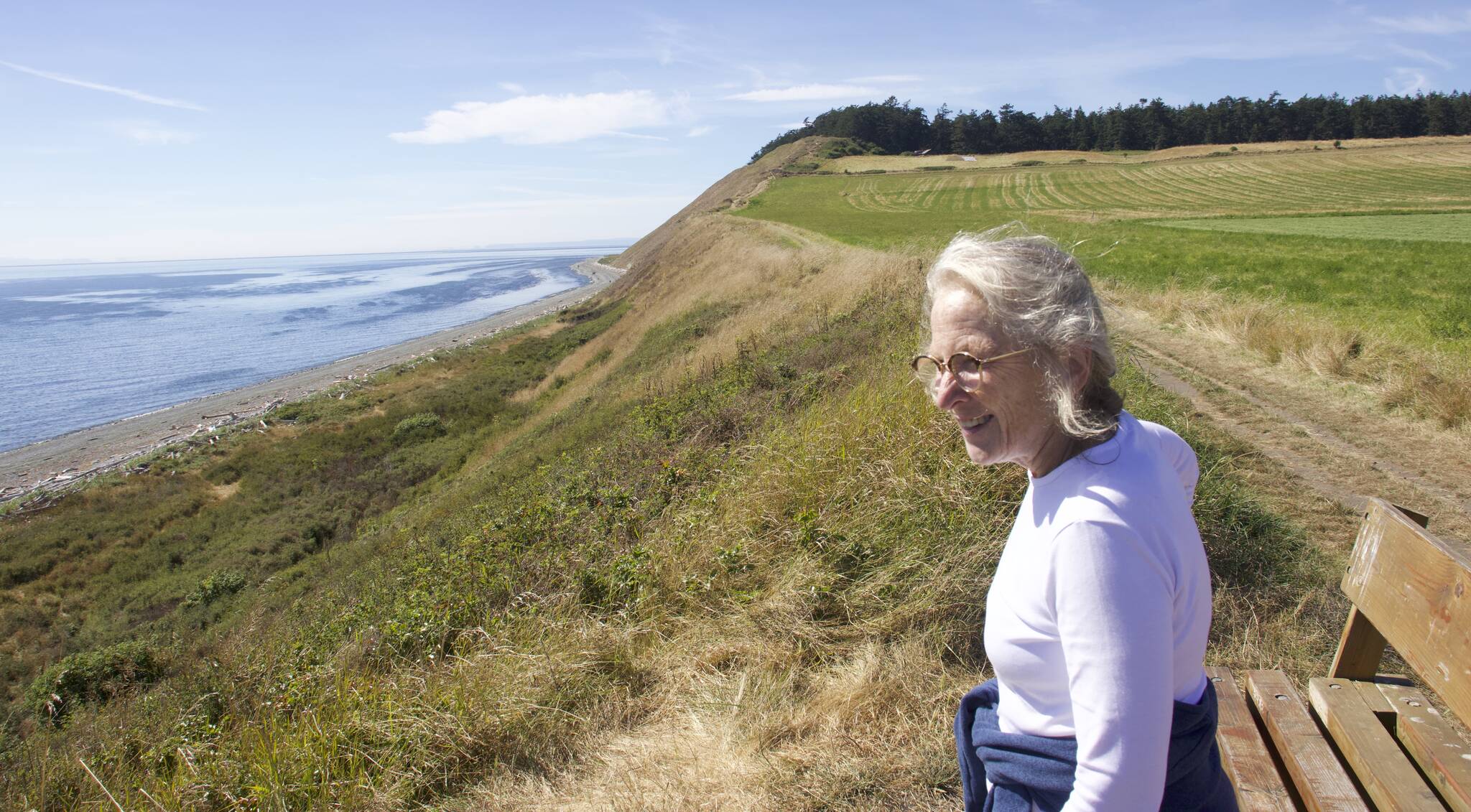Historic Whidbey is hosting a walking tour that explains the origins of a conflict caused by an American shooting a British-owned pig.
From 11 a.m. to 2 p.m. on Aug. 20, the Pig War history walk begins with a presentation at the Pratt Sheep Barn trailhead, located at 162 Cemetery Road in Coupeville. At 11:40, the hike to the Sarah and Jacob Ebey House begins, ending with a lunch and final presentation at the Ferry House at Ebey’s Landing.
“We started this program because San Juan Island National Historic Park is celebrating the 150th anniversary of the resolution of the boundary dispute between the United States and Great Britain,” said Lynn Hyde, Director of Historic Whidbey. “So because some of our historic figures were intimately involved in that, we wanted to do a piggyback event here.”
The dispute became known as the Pig War even though it never actually culminated in a war, and there were no casualties, aside from the pig.
In 1859, there was a confrontation between America and Great Britain due to the fact they both wanted control of the San Juan Islands “because what’s more important than a bunch of rocks sticking out of the water in the middle of the Salish Sea?” Hyde laughed.
San Juan Island, unlike the Penn Cove area, was not a permanent, year-round Native American village. It was a “shared resource site,” according to Hyde. The fishing in the area brought tribes from all over during certain times of the year.
The pig in question was not in a fenced area and kept wandering into an American farmer’s garden. The farmer shot the pig and refused to pay the high price the British said it was worth.
The next thing you know, the U.S. Army and British Navy got involved.
“They came really close to coming to war for the third time in 80 years,” she said of the two countries.
Hyde said the British, who were fighting for empires all over the world, didn’t want to go to war with America and the Americans didn’t either, especially with the Civil War looming.
President James Buchanan sent out General Winfield Scott, the hero of the Mexican-American War, to negotiate with the British. It was decided that America and Britain would jointly occupy the island. Because of the Civil War, the matter wasn’t concluded until 1872 when the decision was made by a German leader, oddly enough. Emperor Wilhelm I decided 150 years ago — on Oct. 21, 1872 — that the land should belong to the United States.
Col. Granville Haller, who was a commander at Fort Townsend, and soldiers from Fort Bellingham all came to San Juan Island during the conflict. Haller’s home is located on the corner of Front and Main Streets in Coupeville and is being restored by Historic Whidbey.
During the tour, participants will learn at the Sarah and Jacob Ebey House how Isaac Ebey, one of the earliest settlers in the territory, was involved in the story. He had already been killed when the Pig War happened, but he had played a role in setting up the political climate that eventually led to it.
Hyde said this area of Washington is often overlooked in the greater context of early American history.
“Right now it looks pretty rural and out of the way, but it was really the center of the Coast Salish universe,” she said. “It’s also where Europeans entered Puget Sound for the first time.”
She described Penn Cove as the “Manhattan of the Coast Salish world.” She explained that the first Europeans and Americans who explored the region said it was the most densely populated Native area that they found anywhere in the Salish Sea. That puts into perspective how much history happened on the island.
“Why there weren’t more wars here is anybody’s guess,” Hyde said.
The event is free with an option to order a brown bag lunch. It is limited to 40 people so registration is required. The hiking part of the tour is optional. For more information and to register, go to historicwhidbey.org.


